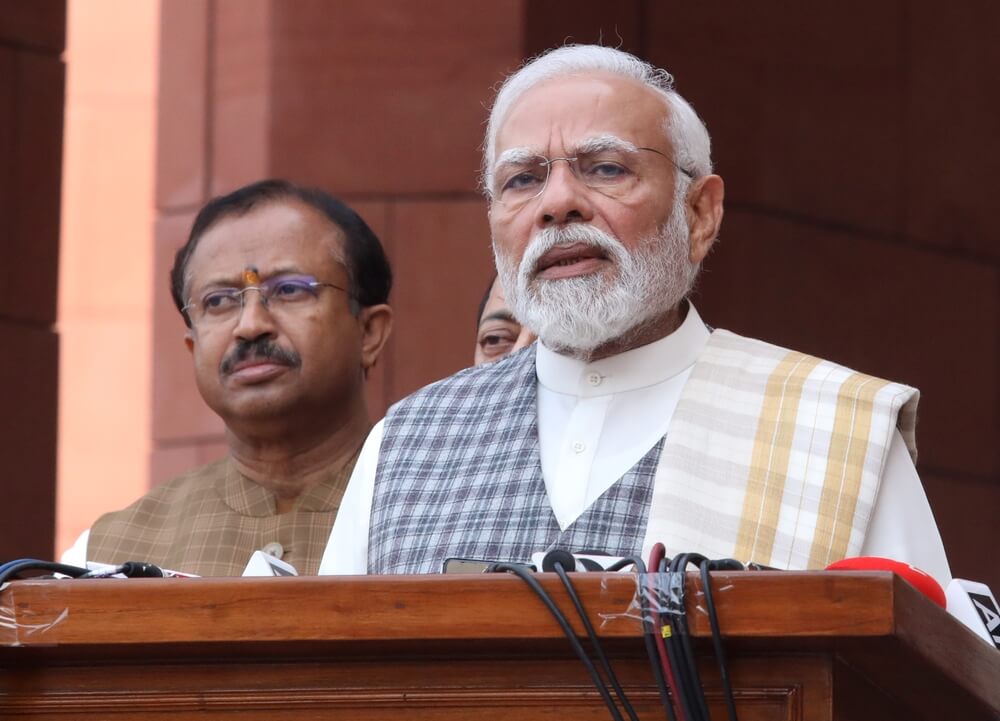Until last week, India was looking forward to marking Independence Day on 15 August amid a fairly rosy outlook for its political and economic place in the world. But then Donald Trump abruptly turned on his “bromance” partner with threatened tariffs, which could knock 1% off India’s GDP growth.
Trump threatened 50% tariffs to try to force India to cut imports of Russian oil, which Washington says undermines its sanctions on Moscow.
Much may hinge on a meeting between the US president and Russia’s Vladimir Putin, which falls on the anniversary of when India threw off the British in 1947.
If Trump should reach a deal with Putin, India may be able to get some relief because its Russian oil imports would become less important to the US.
India has until 27 August to reach a trade deal with Trump. In the meantime, Narendra Modi, prime minister, faces a perilous path to reach its goal of “strategic autonomy” between the US, China and Russia.
India is worried that its rivals next door, Pakistan and Bangladesh, seem to be ahead in great power politics.
Islamabad and Washington seem to be getting closer, especially after Pakistan officially endorsed Trump for the Nobel Peace Prize, while Bangladesh’s economy could benefit from a comparative advantage if India faces higher tariffs.
Modi had enjoyed close ties with Trump until he made the tariff threat on 30 July, when the US president also announced a trade deal with Pakistan with tariffs of only 19%, while Bangladesh faces a 35% rate.
It is interesting to note that Trump had imposed only a 10% tariff on Russia, while China’s is 30%, and this week Beijing was given more time to negotiate.
From bonhomie to tariff pique
Not long ago, Modi and Trump exuded bonhomie and smiles at a February White House meeting, which was the culmination of several years of good personal relations since Trump’s first term.
By contrast, Modi was refused a US visa in 2005 because of his role as Gujurat’s chief minister during anti-Muslim violence that left around 2,000 dead in 2002.
It would have been hard for Modi to accept Trump’s claim that he achieved a ceasefire between India and Pakistan after their four-day military conflict in May given Modi’s carefully cultivated image as a strongman who stands up to his neighbours. Modi’s lack of gratitude is thought to have been a major factor in Trump’s fit of tariff pique.
Trump called Modi his “great friend”, but now a meeting of leaders of the Quad - the US, India, Australia and Japan - scheduled for later this year looks unlikely.
Modi, meanwhile, said he would make his first visit to China in more than seven years for a summit of the Shanghai Co-operation Organisation that begins on 31 August. Putin is also expected soon to make his first visit to India since the invasion of Ukraine in 2022.
“I may have to pay a very heavy price personally” for refusing to give in to Trump, Modi said last week. “But I am prepared for it.”
India has been allowed to buy Russian oil despite sanctions imposed on Moscow over the Ukraine war as long as the price remained below $60 a barrel
Trump demanded India stop buying oil from Russia even though China buys more, while Turkey is another big buyer. But India would find it hard to protect its economy as well as cut Russian oil imports, given they represent up to 40% of its crude imports.
Trump seems oblivious to the fact that if India turned to other suppliers, it could push the oil price to more than $80 a barrel, which would be unlikely to please American consumers.
India has been allowed to buy Russian oil despite sanctions imposed on Moscow over the Ukraine war as long as the price remained below $60 a barrel under a G7 price cap, which aimed to keep prices low while limiting revenues to Moscow.
The European Union’s latest sanctions on refined products made from Russian crude go into force from January, so India had already been seeking to diversify oil imports, but this process is likely to take more time than perhaps Trump has patience for.
Less room to manoeuvre
Indian Americans, an increasingly influential segment of US society, are not only digesting Trump’s diplomatic aggression towards their cultural home but also his crackdown on undocumented migrants, of whom Indian nationals make up the biggest segment after those from Mexico and El Salvador.
 Modi had been hoping his Hindu nationalism and economic record would allow him to ride over his coalition partners for the remaining four years of his term, but he now faces less room to manoeuvre
Modi had been hoping his Hindu nationalism and economic record would allow him to ride over his coalition partners for the remaining four years of his term, but he now faces less room to manoeuvre
Indian nationals are also worried about increased scrutiny of professional H-1B visas giving permission to work in the US.
They may note that India is also enforcing harsh immigration controls with the expulsion of hundreds of ethnic Bengali Muslims to Bangladesh without due process, Human Rights Watch said in a recent report.
Modi had been hoping his Hindu nationalism and economic record would allow him to ride over his coalition partners for the remaining four years of his term, but he now faces less room to manoeuvre.
India’s Independence Day was expected to focus on “unity in diversity, inclusive growth and national development,” aligning with India’s vision of becoming a $5 trillion economy by 2047, the 100th anniversary of independence, according to Indian media reports.
But Modi faces a thorny path to get there without being trampled by the US, China and Russia. Modi must be hoping the mercurial Trump changes his mind again to give him a boost.